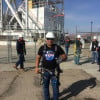Editor’s Note: Inspectioneers, while this article is presented from another industry, the concepts are applicable to the process industries. We must always be mindful of our capabilities and limitations. This article presents some ideas to help us overcome tendencies or pitfalls we may not realize.
Introduction
Whether a hardware assembly is being constructed for use nearby on the ground or is to be launched into deep space, the Quality Assurance Engineer (QAE) provides a safety net for mission-critical hardware. The QAE inspects structural welds, micro-electronic installations on antennas, parachute soft goods, and a myriad of other assemblies in order to identify risks and avert hardware failures that may occur millions of miles away or thousands of hours after startup. The variety and complexity of hardware, and the many dimensions of the QA inspection process, combine in such a manner that even the most experienced QAE may miss problems. Even worse - and a major theme of this article - the QAE's very experience and skill set may contribute in unexpected ways to the risk of error. There are no absolute guarantees of successful quality assurance.
For example, cross-training QAEs in multiple facets of QA, or deploying QAEs who are Subject Matter Experts (SMEs) reduces, but does not eliminate the risk of faulty QA. Although it does not offer a foolproof method of QA, this article proposes a new perspective on the methodology of QA that may afford modest reductions in the risk of error.
Background
An internet search of "Quality Assurance Algorithms" discloses the surprising result that there currently exist no widely used algorithmic approaches guiding the process of inspection. Inspectors and QAEs have undoubtedly built their own informal and undocumented protocols over time, likely based on their field experience, prior knowledge, and disciplinary backgrounds. This informal approach to the inspection process can promote efficient and reliable inspections as long as QAEs encounter essentially familiar challenges in their work. But this very familiarity can impair the QAE’s ability to perceive new issues in the structure or assembly under inspection.
QAEs, like everyone else, often see what they expect to see. As the cliché goes: “if all you have is a hammer, everything looks like a nail.” For example, the QAE with a materials science background observes small flaws in an assembly and sees evidence of corrosion. Another inspector, trained differently, attributes the same flaws to the effects of mechanical stress. This article aims to make the inspection process less familiar to the QAE and thereby mitigate the risk of errors stemming from familiarity, habit, and unconscious discipline-linked bias.
The QA algorithm set out below focuses on visual inspection of typical hardware assemblies and structures, although occasions arise when auditory, tactile, or even olfactory cues may be significant.
Inspection of an assembly or system component proceeds through three phases:
-
Detection: identification of visible or concealed defects;
-
Recognition: recalling elements from the QAE's disciplinary and experiential knowledge base that validate attribution of a visible defect to an underlying cause or source;
-
Interpretation: explaining the meaning of the identified defect and causal nexus in such a way as to ensure appropriate remediation.
These processes usually occur sequentially, although interdependent and recursive pathways inevitably emerge among their elements. For example, attribution of causality often points up possible remediation, but failed efforts at remediation may counter previous attributions of causality. If the "fix" doesn't work, the "bug" or defect may have arisen from a different unidentified source.
Emphasis in this discussion centers on visual inspection. Human vision and cognition remain an enigma: how the QAE sees, what they see, and what they infer from what they see can challenge even the most experienced inspector. As noted, previous experience can often serve as an obstacle to successful on-going QA.
The challenge addressed in this article is not to develop new ways to document or communicate what the QAE sees; it is instead to reflect on how visual inputs are processed "upstream" in order to help the QAE see things in new ways. Given that hardware systems vary in size and complexity, the problem of conducting a thorough and accurate visual inspection to identify noticeable risks/defects is non-trivial. An assurance algorithm that reflects the three phases of the inspection process (detection, recognition, and interpretation), and thereby encourages awareness of inspection alternatives, promises to deepen the inspection process and improve its outcomes.

















Comments and Discussion
There are no comments yet.
Add a Comment
Please log in or register to participate in comments and discussions.